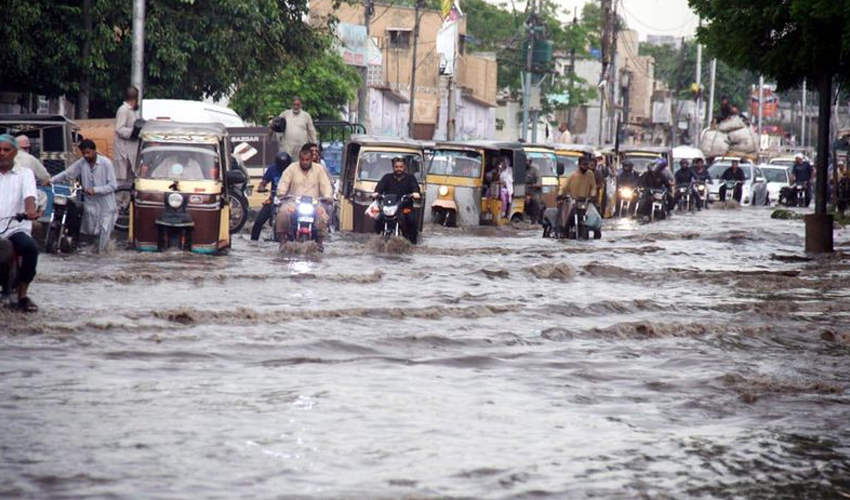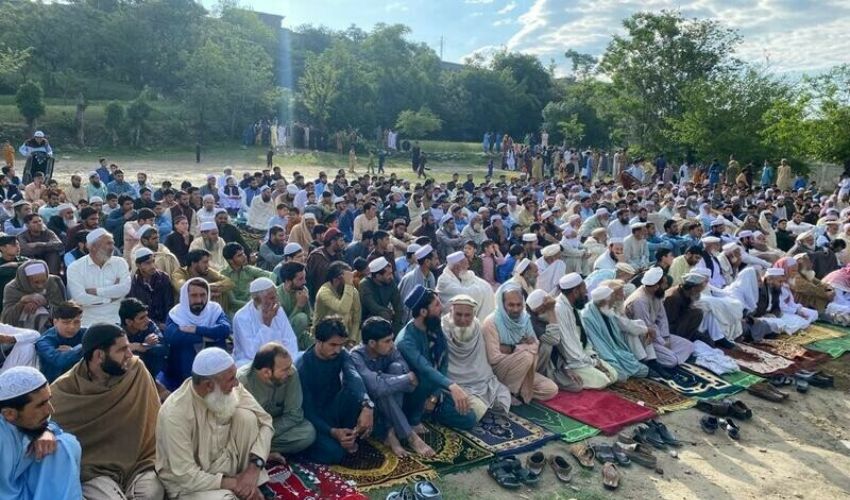Heavy rainfall is expected to hit Lahore this week, prompting the Met Department to issue an alert for the city.
The Met Department has predicted rains with thunder in the city, saying heavy rains will be recorded in the next 48 hours, which will reduce the intensity of heat and humidity.
It said that a new system of rain has entered Punjab under which cloudy and sunny weather will continue throughout the day on Monday. The heavy rain is likely to reduce temperatures as well as decrease the intensity of humidity, according to the Met Department.
The forecast has sparked concerns of worsening dengue outbreaks, with authorities already reporting an increase in dengue larvae growth due to recent rains. As a preventive measure, dengue larvae have been eradicated from over 2,117 locations, and more than 2,000 individuals have been served notices for violating dengue control laws.
Meanwhile, rainfall across Sindh and other regions has caused severe disruption, leaving many areas submerged and isolated. Sukkur received up to 300mm of rain over the past two days, during which time water was removed from most parts of the city, including key areas like Ghanta Ghar Chowk, Old Sukkur, Nishtar Road, Jail Road, and Maqam Road.
However, other areas, such as Nowshehro Feroze, Kandiaro, and Shaheed Benazirabad district, have not been as fortunate. Intermittent rains in these regions have left streets flooded, with water invading homes and proving difficult to remove.
In Shaheed Benazirabad, entire neighbourhoods in Qazi Ahmed, Daulatpur, Shahpur Jahanian, and Sakrand are now resembling vast pools of stagnant water. The administrations say the rain is not stopping due to which the authorities are facing difficulties in extracting water.
In Dadu, a crack developed near a village of Dadu Canal, Bhai Khan Lashari, submerging hundreds of acres of agricultural land underwater. With water rapidly advancing toward the village of Bhai Khan Lashari and nearby settlements, local residents have taken matters into their own hands, working tirelessly to repair the breach.
The rains have also affected infrastructure across Sindh. In Kandiaro, the Darbelo High School building suffered structural damage, with parts of its roof collapsing. Fortunately, no students or teachers were harmed. Cracks have also appeared in the school’s foundation, raising safety concerns for future use.
Further south in Mehrabpur, fish ponds near Sohrab Khan village have been breached due to continuous rainfall, while in Johi, rain over the Kirthar Mountains has resulted in flooding across several rivers. The floodwaters have reached alarming levels, with the Nai Gaj River seeing a rise of up to eight feet.
The rising waters have closed roads, severing the connection between five union councils and their headquarters in Johi. Additionally, the MNV (Main Nara Valley) drain has begun spilling into nearby villages, further endangering local communities.
In Gumbat, water levels in the Indus River have surged, submerging raw areas and crops. Roads in the katcha area have also been inundated, cutting off communication and transport links between the region’s cities and villages.
As these regions brace for more rain, the situation continues to escalate, leaving thousands of residents grappling with flood damage, compromised infrastructure, and potential health crises such as dengue.


























